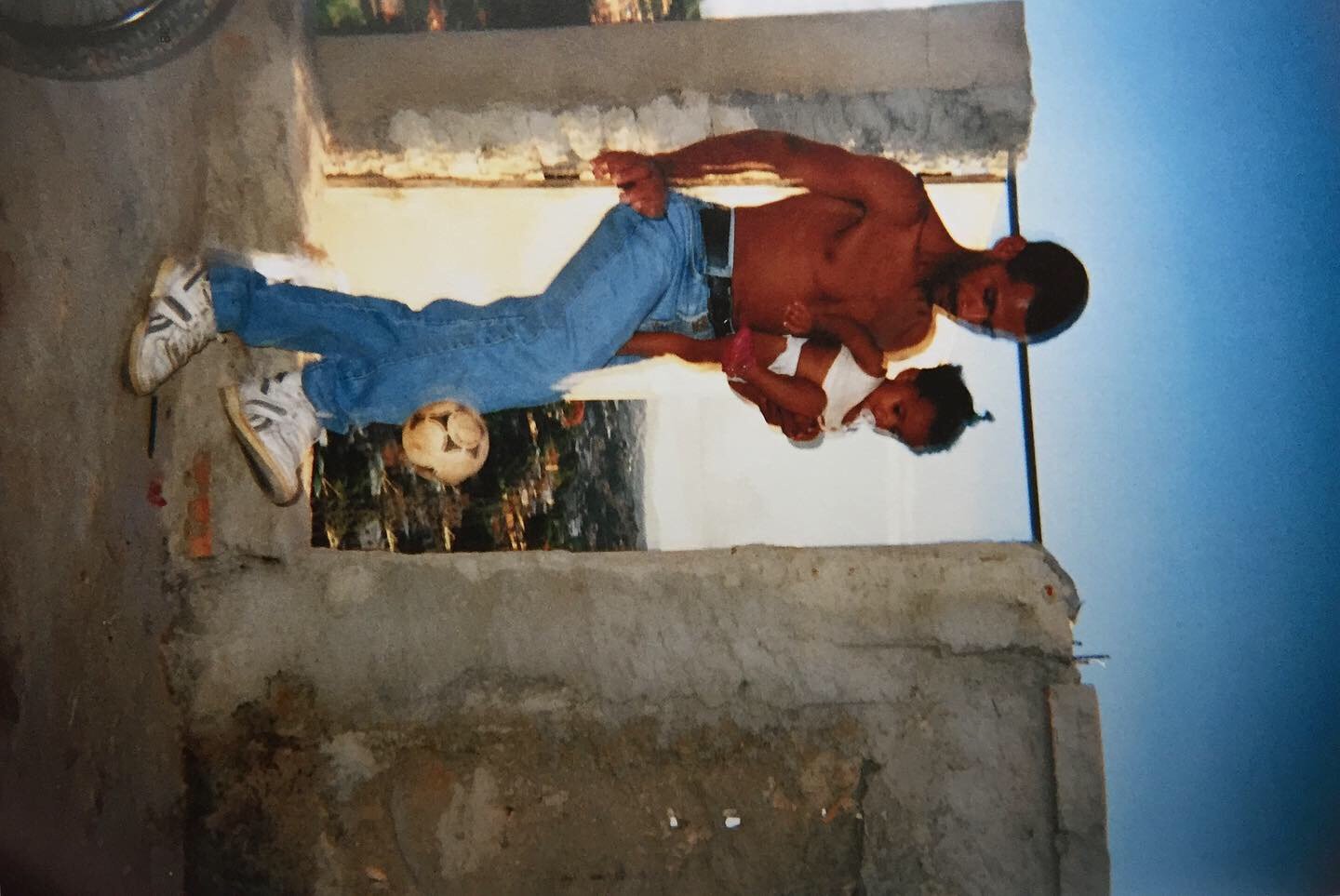No Mundo Maravilhoso do Futebol by Julian German
Germain asked around 50 children from the Favela do Morro do Cascalho in Belo Horizonte to take part in photography workshops and equipped them with cheap ‘point and shoot’ cameras with which to photograph their community and its relationship to football.
The football pitch provides the physical entrance to the Cascalho Favela, and the wonder and everyday practice of football in these images is similarly a point of entry into the children’s realities, and an alighting into their collective dreams.None of the children had ever taken photographs before and the magic of the camera as an object feels present in the curiosity and unselfconsciousness of their approach; in putting the power of perception and presentation in the hands of the children themselves the book can be seen as a reaction against the unexamined cliches and exploitative tendencies of more conventional documentary photography.
Accompanying the photographs are a series of paintings made by the same children, spontaneously settling again on football as their subject, and the words of the community as a whole conveying their love for football and its significance in their lives.
‘The most important event in the history of Cascalho was the construction of the football pitch […] It was built in 1973. The people did everything. It was all their own work, with determination and much hard labour. It was done by hand. They cut the weeds with a scythe and they began to dig with shovels, hoes and pickaxes […] Once, on a Good Friday, a contractor came and built a wall halfway across the pitch. Everybody was shocked and it was decided the wall must be smashed down. We decided it and then we did it; we chased the security guard away, destroyed the wall and organised a match to commemorate the occasion.’
Hardcover, perfect condition. Text in English and Portuguese. 1998.
Germain asked around 50 children from the Favela do Morro do Cascalho in Belo Horizonte to take part in photography workshops and equipped them with cheap ‘point and shoot’ cameras with which to photograph their community and its relationship to football.
The football pitch provides the physical entrance to the Cascalho Favela, and the wonder and everyday practice of football in these images is similarly a point of entry into the children’s realities, and an alighting into their collective dreams.None of the children had ever taken photographs before and the magic of the camera as an object feels present in the curiosity and unselfconsciousness of their approach; in putting the power of perception and presentation in the hands of the children themselves the book can be seen as a reaction against the unexamined cliches and exploitative tendencies of more conventional documentary photography.
Accompanying the photographs are a series of paintings made by the same children, spontaneously settling again on football as their subject, and the words of the community as a whole conveying their love for football and its significance in their lives.
‘The most important event in the history of Cascalho was the construction of the football pitch […] It was built in 1973. The people did everything. It was all their own work, with determination and much hard labour. It was done by hand. They cut the weeds with a scythe and they began to dig with shovels, hoes and pickaxes […] Once, on a Good Friday, a contractor came and built a wall halfway across the pitch. Everybody was shocked and it was decided the wall must be smashed down. We decided it and then we did it; we chased the security guard away, destroyed the wall and organised a match to commemorate the occasion.’
Hardcover, perfect condition. Text in English and Portuguese. 1998.
Germain asked around 50 children from the Favela do Morro do Cascalho in Belo Horizonte to take part in photography workshops and equipped them with cheap ‘point and shoot’ cameras with which to photograph their community and its relationship to football.
The football pitch provides the physical entrance to the Cascalho Favela, and the wonder and everyday practice of football in these images is similarly a point of entry into the children’s realities, and an alighting into their collective dreams.None of the children had ever taken photographs before and the magic of the camera as an object feels present in the curiosity and unselfconsciousness of their approach; in putting the power of perception and presentation in the hands of the children themselves the book can be seen as a reaction against the unexamined cliches and exploitative tendencies of more conventional documentary photography.
Accompanying the photographs are a series of paintings made by the same children, spontaneously settling again on football as their subject, and the words of the community as a whole conveying their love for football and its significance in their lives.
‘The most important event in the history of Cascalho was the construction of the football pitch […] It was built in 1973. The people did everything. It was all their own work, with determination and much hard labour. It was done by hand. They cut the weeds with a scythe and they began to dig with shovels, hoes and pickaxes […] Once, on a Good Friday, a contractor came and built a wall halfway across the pitch. Everybody was shocked and it was decided the wall must be smashed down. We decided it and then we did it; we chased the security guard away, destroyed the wall and organised a match to commemorate the occasion.’
Hardcover, perfect condition. Text in English and Portuguese. 1998.











